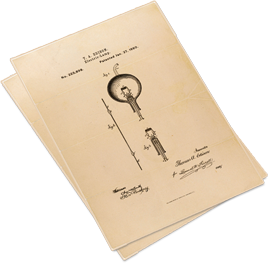Last year the U.S. Trademark Office tested and then formally implemented the Proof Of Use Audit Program. Under this program, some registrations, randomly selected, will now be targeted for audit when a Declaration of Use is submitted either to maintain the registration during the sixth year after registration or to renew the registration at the end of any 10-year term. When your registration is chosen for audit, you will then be required to show “proof of use” of your mark on or with not just one item in each “class” of goods and services in your registration, but with several items in each class[1]. The stated purpose of the program is to improve the integrity and accuracy of the trademark register by cancelling some registrations or deleting some goods and services from other registrations that “may unnecessarily block future applications.”
The reason that governments register and protect trademarks is to prevent consumers from being confused or deceived about who is making and standing behind what we, as consumers, buy. An existing registration, among other things, prohibits registration by others of “confusingly similar” trademarks and service marks (marks) for use on and with “related” goods and services sold in the same markets to the same class of consumers. So it makes sense to eliminate registrations, or limit the scope of protection of marks where they are no longer in use. That has always been the purpose of the required sixth-year maintenance declaration and renewal declarations and the proof of use (referred to as a “specimen”) that accompany them. The declaration states that the registrant is currently using the registered mark on all goods and services identified in the registration. The specimen is a photo showing the mark on goods or a scan of a document offering or providing services for just one item in each class of goods and services. Trademark Office practice has been to take the registrant’s word that the mark is used on or with all of the other items not voluntarily deleted from the registration.
No longer. Any registration that lists four or more items in a single class, or has at least two classes listing two or more items, may be selected for audit. When that happens, you will receive a post-registration Action giving you the good news and requiring that you provide a specimen proving use of your mark on or with one or more additional items listed in one or more classes in your registration. Those items are not yours to choose, but are selected by the trademark examiner who is looking at and will accept or reject your declaration.
In response to the post-registration Action, you may then (oh-gee-I-meant-to) delete items from your registration, but not the items the examiner selected for you. If you cannot prove use of your mark on any one of the examiner’s selections, you will then receive a second Action that may insist that you provide specimens of use of your mark on all of the remaining items in your registration, or at least a good number of them. And if you don’t respond at all, your registration will be cancelled.
The idea of the program is to encourage registrants to take the time to evaluate and correct their registrations to reflect the actual use of their marks in the marketplace. Whether these audits are a welcome or unwelcome device depends on your point of view. If you are one of the chosen, you will likely look at it as at least an imposition on your time and resources. If you have tried to obtain a new trademark registration, and were blocked by an existing registration that hasn’t been maintained or renewed in a half-dozen years, you might appreciate the effort by the Trademark Office to improve the integrity and accuracy of the registry.
[1] In trademark registrations, the listed goods on which, and services with which a trademark is used are grouped into “classes” each representing broadly, and not very accurately, a market in which the goods and services are traded.


